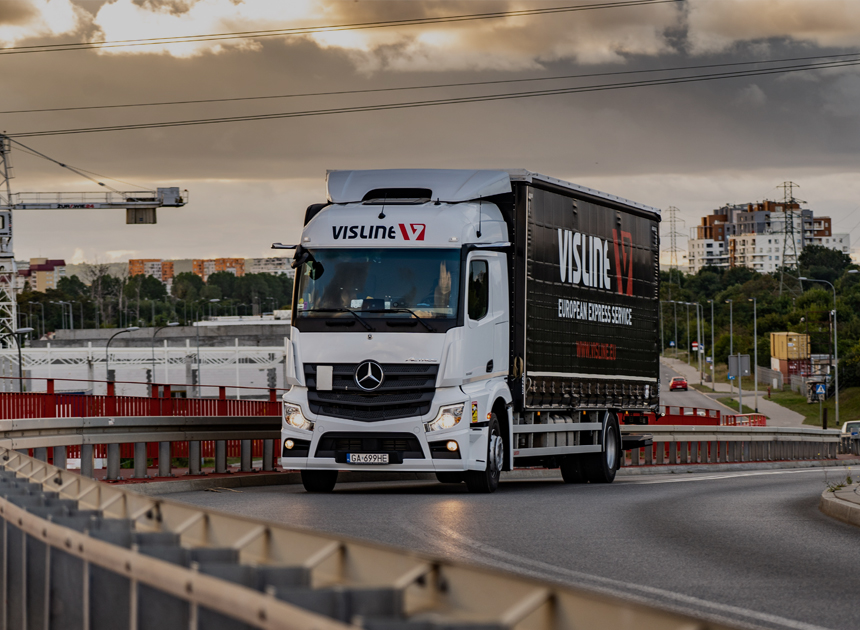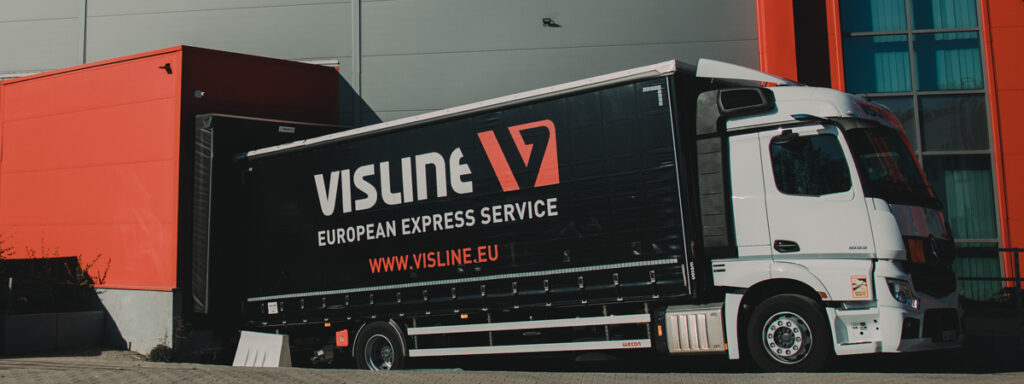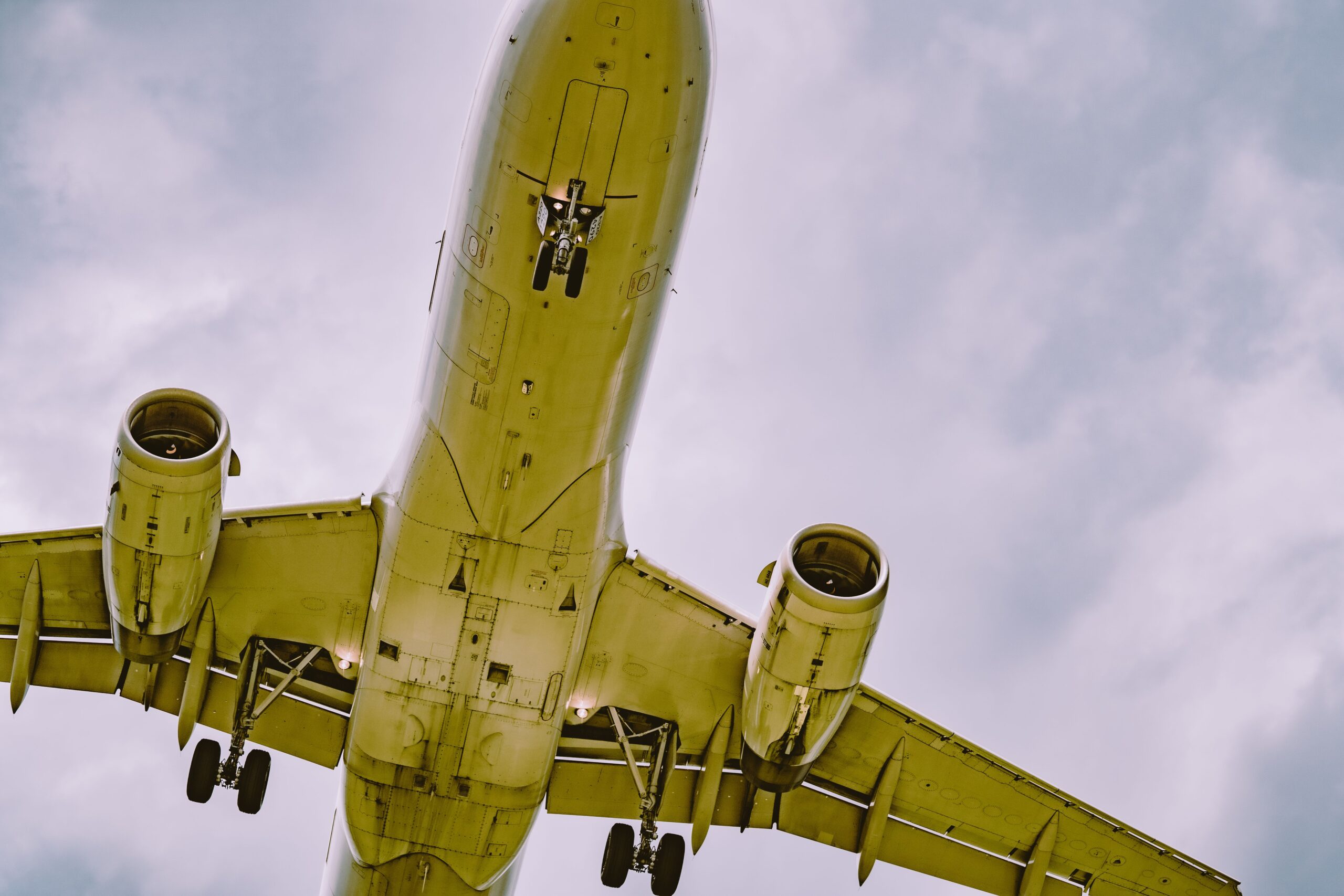The End of the War in Ukraine: What Could It Mean for Road Transport?
Konrad Spuła
Updated 26.02.2025 | Published 14.02.2025
10 min reading time

If media reports and official government positions are to be taken seriously, there is a significant chance that military operations in Ukraine will conclude in 2025. It is worth considering how the transition to peace will affect the TSL (Transport, Spedition, and Logistics) sector—will it be a period of difficult challenges or new opportunities? Or will changes in the transport market take longer to materialize? In our forecast, we have outlined several scenarios and the phenomena accompanying them. Here they are.

1. A Carrier’s Market and Rising Freight Rates
challenge
A decision to restore previous regulations on Ukrainian carriers’ access to the EU transport market will lead to a reduction in the supply of transport services. A significant portion of Ukrainian carriers is expected to return to Ukraine to continue their operations there.
At the same time, economic recovery driven by the anticipated lifting (even partially) of restrictions on transporting goods to and from Russia and Belarus, and most importantly, a massive reconstruction program for Ukraine, will increase demand for transportation. The simple conclusion is that higher transport demand, coupled with an outflow of transport companies, will contribute to significant increases in freight rates per kilometer.
opportunity
Looking further ahead, carriers who recognize this potential may take advantage of increased demand and invest in fleet expansion. In the long term, this will increase the number of vehicles and slow down the rise in freight prices—provided there are enough drivers.
The issue of a shortage of professional drivers, which has been growing annually in the EU, will need to be addressed. This is particularly relevant for large Polish transport companies, which, due to the westward migration of some Ukrainian drivers, are seeking alternative solutions.

We are observing a negative trend: the labor market is experiencing a decreasing number of professional drivers, especially those qualified to operate the heaviest vehicles. Several large transport companies from the Polish coast have been relying on drivers from the Philippines and India for years.
Tomasz Rejek,
President, Pomorskie Stowarzyszenie Przewoźników Drogowych
In summary, after the conflict ends, the bargaining power of transport service providers will increase significantly. We can therefore expect that the second half of 2025 will mark the beginning of a carrier’s market era.
2. Fleet Modernization vs. Uncertainty
challenge
It took only a few political moves from Donald Trump’s administration for the foreign exchange markets to react sharply to the announcement of a swift end to the war in Ukraine. At the turn of the year, the euro exchange rate against the Polish złoty fluctuated around 4.25 PLN, but following the U.S. president’s declarations and actions, it approached 4.15 PLN (data as of February 17, 2025). According to Marian Kempa, President of Visline – a leader in the European road transport sector – this situation will have significant consequences:
Strong national currencies mean lower competitiveness for transport companies from countries like Poland or the Czech Republic compared to businesses operating within the eurozone.

The situation becomes serious when the price increases resulting from exchange rate differences coincide with higher freight rates, driven by a demand for transport services that exceeds supply (due to a limited number of carriers). As a large company, we can respond accordingly—we are prepared and, therefore, resilient, even to prolonged currency fluctuations. However, for smaller enterprises, this may present a significant challenge.
Marian Kempa,
CEO, Visline
It is not difficult to predict that the strengthening of national currencies will continue as the political situation evolves. In response to further moves by global powers, we should expect sharp exchange rate fluctuations and possibly the involvement of speculators.
The question remains as to how well the central banks of Poland and the Czech Republic are prepared for intervention measures to protect the interests of transport and forwarding companies and, more broadly, the entire export market to eurozone countries.
3. Fleet Modernization vs. Uncertainty
challenge
What if carriers hold back on fleet investments? This scenario is highly probable because the legal framework and conditions under which transport will operate post-war remain uncertain. Many questions arise, the most crucial being:
- Will the EU return to pre-war regulations, ensuring equal conditions for Ukrainian carriers in providing transport services?
- If so, will this lead to retaliatory actions from Ukraine, such as making border crossings more difficult (e.g., through an e-queue system)?
- After the war, will a group of countries have preferential conditions for handling transport to Ukraine, and will Poland be among them?
- What will be the quota levels for EU and Ukrainian carriers, and how will they be allocated?
Before the war, Polish and Ukrainian carriers had a quota of 160,000 bilateral transport permits. The Ukrainian side used 100% of them, while Poland used only 40%. However, after the war, these proportions might shift, especially if Polish transport companies play a role in Ukraine’s reconstruction.
Much will depend on post-war agreements between key players: the European Union, Ukraine, the United States, and possibly a group of countries with a privileged position in reconstruction efforts. Where Poland fits into this puzzle remains to be seen. For now, we can only speculate, which is far from enough to provide transport investors with a clear incentive to expand their fleets. However, once that incentive appears, we can expect increased demand for modern vehicles compliant with Mobility Package regulations.
4. Poland as a Road and Rail Hub Between East and West
opportunity
oland has played (and continues to play) an important role as a hub for military supplies. Maciej Wroński, President of the Employers’ Association “Transport i Logistyka,” sees great potential in utilizing this experience, infrastructure, and geographical location for civilian logistics:
The increase in trade is also an opportunity for logistics and warehousing companies. The natural investment areas for transport hubs, land terminals, distribution centers, and warehouses are two regions—Podkarpacie and Lublin. The transportation network (A4 motorway, Via Carpatia corridor [S19 expressway], railway route No. 65 [LHS], Jasionka airport, etc.) and their proximity to the border favor such development.
(source: https://forsal.pl/transport/artykuly/8740670,szanse-i-wyzwania-zwiazane-z-ukraina.html)
While the idea of the Tricity (Gdańsk, Gdynia, and Sopot) as a transport hub for Ukrainian exports and imports has not fully materialized due to the long distance to ports, there is a high probability that Rzeszów and its surroundings will transform into a logistics center servicing Ukraine’s reconstruction.
This will increase the participation of Polish companies in transport, warehousing, and intermodal solutions, such as expanding the role of rail in the logistics chain. Poland has at least two broad-gauge railway connections toward Ukraine: Sławków-Hrubieszów and Przemyśl-Lviv. Additionally, work is underway to construct a standard-gauge railway line between Skniłów and Medyka.

5. Increased Demand for Transport Services
opportunity
The economic crisis in Europe has led to a significant decline in demand for transport services. Sanctions, global political shifts, supply chain disruptions, declining consumption, and strong competition from China are the primary reasons for Europe’s economic struggles. Market data indicates a drastic drop in transport offers:
According to TIMOCOM, freight offers decreased by 30% in 2023, and in Germany alone, by up to 40%.
It is easy to predict that the end of the war will mark the beginning of economic normalization between Europe and Russia/Belarus. Increased security in Ukraine, coupled with substantial capital inflows for reconstruction, will boost the market and drive a sharp increase in transport demand.
For transport and freight forwarding companies, this will be a new era, where those capable of handling increased orders will secure or maintain market leadership. Companies with their own fleet, a strong subcontractor network, and efficient operational and back-office support will have a competitive edge.

6. Market for Used Vehicles
opportunity
The European Union’s decision to withdraw from the liberalization of the right to provide international road transport services for Ukrainian entities will strengthen the presence of Ukrainian companies in their domestic market. This, in turn, will increase their willingness to invest in their fleets, leading to a wave of tractors and trailers imported from the EU into Ukraine. For European carriers, this will present an opportunity to sell vehicles that the Mobility Package will effectively exclude from the European market.
A key factor in this context will be customs policy, which currently discourages imports with high tariffs on motor vehicles brought in from the EU. It is expected that this policy may be temporarily relaxed if it becomes evident that the intensive rebuilding of the country requires an immediate increase in road transport capacity. A similar situation already occurred at the beginning of the war when Ukraine temporarily lifted import duties.
7. Worst-case scenario for TSL?
challenge
What if the EU maintains a liberal approach towards Ukrainian carriers? Even if this is a short-term solution, it will deepen the inequalities between EU companies, which must bear high costs to comply with regulations, and Ukrainian carriers, who are not subject to the same requirements. As a result, transport companies from the EU will lose competitiveness and will gradually be pushed out by Ukrainian firms offering lower prices.
Much depends on the decisions of the European Union. This will be crucial, as maintaining the liberalization of regulations will weaken the dominant position of Central European transport companies while strengthening Ukrainian carriers. Although Eastern drivers cannot freely perform cabotage or cross-trade transport within the EU, monitoring these carriers is highly challenging.
This competition does not have to meet all the conditions that increase our transport operating costs. By legalizing access to our market, we are effectively building a transport powerhouse beyond our eastern border, with which we will find it increasingly difficult to compete.
Tomasz Rejek,
President, Pomorskie Stowarzyszenie Przewoźników Drogowych
The continuation of preferential conditions for Ukrainian carriers after the war will also lead to increased social tensions and a more difficult European integration process. We have already witnessed strong reactions to concessions, such as during the farmers’ protests or the blockade of Ukrainian trucks by Polish transporters at the turn of 2023 and 2024.
8. Summary
The end of the war in Ukraine will bring significant changes to the road transport sector. The anticipated economic revival and the reconstruction process of Ukraine will create new opportunities for carriers and logistics companies but will also come with a range of challenges. Key factors will include the European Union’s decisions on market liberalization, carriers’ investment policies, and the overall economic situation in Europe.
An optimistic scenario envisions the development of Polish logistics hubs and new export opportunities for European transport companies. A pessimistic scenario predicts the continuation of a liberal approach towards Ukrainian carriers, which could negatively impact the competitiveness of EU firms.
If the war ends this year, changes in the transport market will be dictated by the EU’s policy towards Ukraine, Ukraine’s response, and the pace of the country’s reconstruction. Businesses that successfully adapt to the new reality will be able to benefit from the upcoming changes, while others will face significant challenges related to rising costs and increased competition.




